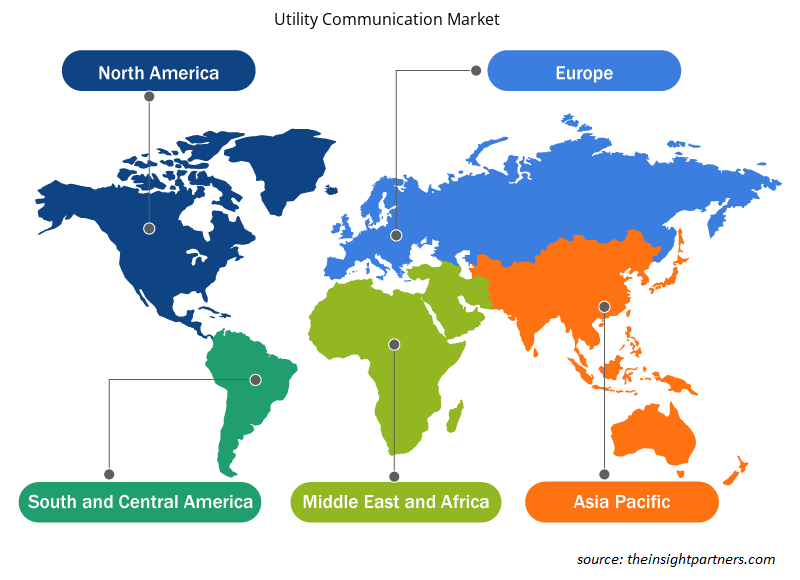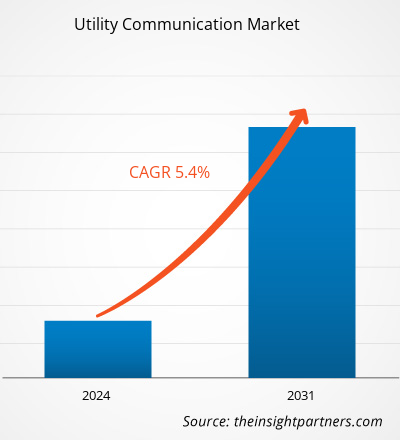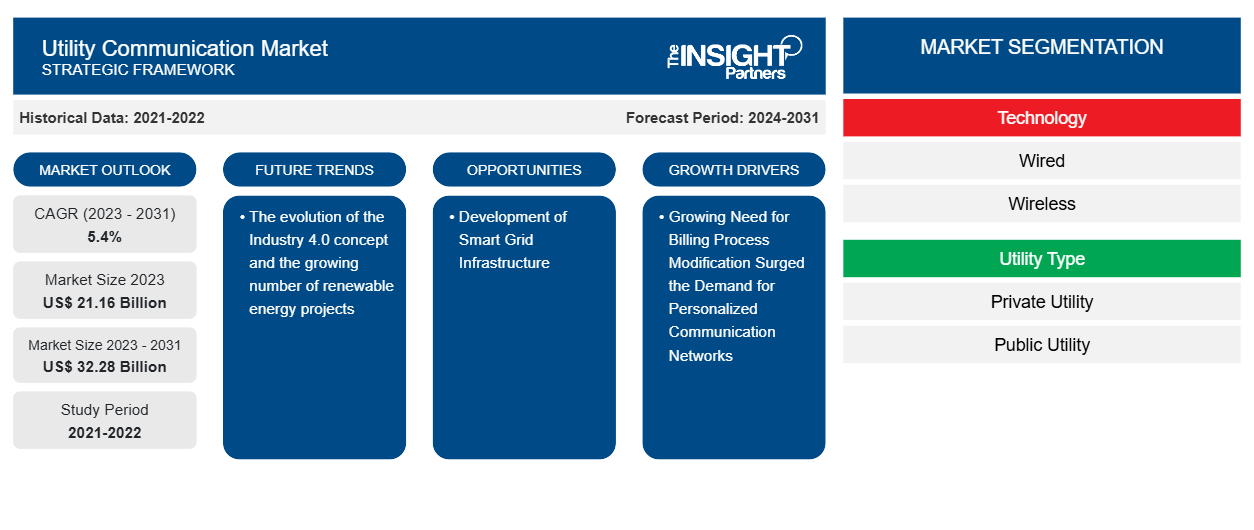유틸리티 커뮤니케이션 시장 규모는 2023년 211억 6천만 달러에서 2031년까지 322억 8천만 달러로 성장할 것으로 예상됩니다. 이 시장은 2023~2031년에 5.4%의 CAGR을 기록할 것으로 예상됩니다. Industry 4.0 개념의 진화와 재생 에너지 프로젝트의 증가는 유틸리티 커뮤니케이션 시장의 주요 트렌드로 남을 가능성이 높습니다.
유틸리티 커뮤니케이션 시장 분석
유틸리티 통신 시장은 청구 프로세스 수정에 대한 필요성이 커지면서 개인화된 통신 네트워크에 대한 수요가 급증하고 분산형 에너지 자원(DER)에 대한 수요가 증가함에 따라 빠른 속도로 성장하고 있습니다. 이 시장은 전력 인프라 개발을 촉진하기 위한 호의적인 정부 이니셔티브와 투자에 의해 꾸준히 확대되고 있습니다. 게다가 스마트 그리드 인프라의 개발과 사물 인터넷(IoT) 및 인공 지능(AI)과 통합된 기술적으로 진보된 시스템의 채택이 증가함에 따라 시장 성장에 수익성 있는 기회가 제공되고 있습니다.
유틸리티 커뮤니케이션 시장 개요
유틸리티 통신은 WAN 및 LAN을 통한 데이터, 비디오 및 음성의 보다 안정적이고 안전하며 안전한 전송을 보장하는 시스템입니다. 이 통신 시스템은 사용자에게 위험한 장소에 쉽게 설치할 수 있는 이점을 제공합니다. 유틸리티 통신 시스템은 비디오 감시, 스마트 그리드, 감독 제어 및 데이터 수집(SADA) 시스템, 이더넷 기반 연결을 포함한 수많은 네트워크를 사용하여 작동합니다. 게다가 유틸리티가 전력 소비 및 분배를 모니터링하기 위한 유선 및 무선 통신 시스템에 대한 수요가 증가함에 따라 예측 기간 동안 시장이 활성화되고 있습니다.
귀하의 요구 사항에 맞게 이 보고서를 사용자 정의하세요
이 보고서의 일부 또는 국가 수준 분석, Excel 데이터 팩을 포함하여 모든 보고서에 대한 사용자 정의를 무료로 받을 수 있으며 신생 기업 및 대학을 위한 훌륭한 혜택과 할인 혜택을 이용할 수 있습니다.
-
이 보고서의 주요 시장 동향을 알아보세요.이 무료 샘플에는 시장 동향부터 추정 및 예측까지 다양한 데이터 분석이 포함됩니다.
유틸리티 커뮤니케이션 시장 지역 통찰력
Insight Partners의 분석가들은 예측 기간 동안 유틸리티 커뮤니케이션 시장에 영향을 미치는 지역적 추세와 요인을 철저히 설명했습니다. 이 섹션에서는 북미, 유럽, 아시아 태평양, 중동 및 아프리카, 남미 및 중미의 유틸리티 커뮤니케이션 시장 세그먼트와 지리에 대해서도 설명합니다.

- 유틸리티 커뮤니케이션 시장을 위한 지역별 특정 데이터 얻기
유틸리티 커뮤니케이션 시장 보고서 범위
| 보고서 속성 | 세부 |
|---|---|
| 2023년 시장 규모 | 211억 6천만 달러 |
| 2031년까지 시장 규모 | 322억 8천만 달러 |
| 글로벌 CAGR (2023-2031) | 5.4% |
| 역사적 데이터 | 2021-2022 |
| 예측 기간 | 2024-2031 |
| 다루는 세그먼트 |
기술로
|
| 포함된 지역 및 국가 |
북아메리카
|
| 시장 선도 기업 및 주요 회사 프로필 |
|
시장 참여자 밀도: 비즈니스 역학에 미치는 영향 이해
유틸리티 커뮤니케이션 시장 시장은 소비자 선호도의 변화, 기술 발전, 제품의 이점에 대한 인식 증가와 같은 요인으로 인해 최종 사용자 수요가 증가함에 따라 빠르게 성장하고 있습니다. 수요가 증가함에 따라 기업은 제품을 확장하고, 소비자의 요구를 충족하기 위해 혁신하고, 새로운 트렌드를 활용하여 시장 성장을 더욱 촉진하고 있습니다.
시장 참여자 밀도는 특정 시장이나 산업 내에서 운영되는 회사나 기업의 분포를 말합니다. 주어진 시장 공간에 얼마나 많은 경쟁자(시장 참여자)가 존재하는지 그 규모나 전체 시장 가치에 비해 나타냅니다.
유틸리티 커뮤니케이션 시장에서 운영되는 주요 회사는 다음과 같습니다.
- ABB 유한회사
- 후지쯔 주식회사
- 제너럴 일렉트릭 회사
- 허니웰 인터내셔널 주식회사
- 오미크론 일렉트로닉스 GmbH
- 로크웰 오토메이션
면책 조항 : 위에 나열된 회사는 어떤 특별한 순서에 따라 순위가 매겨지지 않았습니다.

- 유틸리티 커뮤니케이션 시장의 주요 기업 개요를 알아보세요
- 과거 분석(2년), 기준 연도, CAGR을 포함한 예측(7년)
- PEST 및 SWOT 분석
- 시장 규모 가치/거래량 - 글로벌, 지역, 국가
- 산업 및 경쟁 환경
- Excel 데이터세트
최근 보고서
사용 후기
구매 이유
- 정보에 기반한 의사 결정
- 시장 역학 이해
- 경쟁 분석
- 고객 인사이트
- 시장 예측
- 위험 완화
- 전략 기획
- 투자 타당성 분석
- 신흥 시장 파악
- 마케팅 전략 강화
- 운영 효율성 향상
- 규제 동향에 발맞춰 대응























 무료 샘플 받기 - 유틸리티 통신 시장
무료 샘플 받기 - 유틸리티 통신 시장